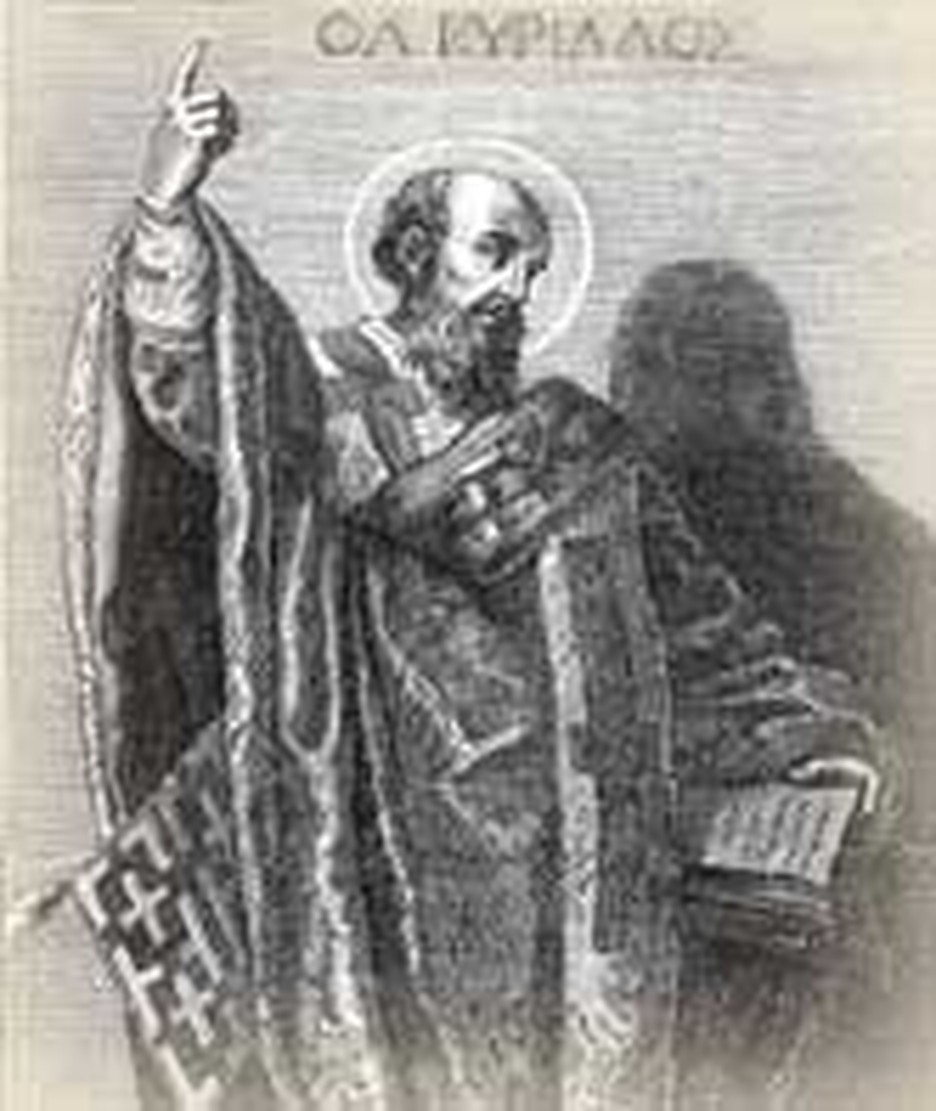
The Third Ecumenical Council opened on this day June 22, 431 in the city of Ephesus in Asia Minor. It was called to resolve a dogmatic controversy that had divided the church into two main camps. Theodore of Mopsuestia, supported by Nestorius, Archbishop of Constantinople, held to what has become known as the Nestorian heresy. The opposite camp was represented by Cyril, Archbishop of Alexandria, the pope, and emperor Theodosius the Younger. Theodosius, who called the Council, believed that the strength of his empire depended upon true worship of God without the intermingling of falsehood. Two hundred fathers attended.
The Nestorian teaching originated in the school of Antioch, and was taught by Diodorus and by Theodore, bishop of Mopsuestia. What was the heresy? These men did not accept the Orthodox belief that the human and divine natures of Christ were united from the instant of the Word's conception in the womb of Mary. A symbol of this controversy was the acceptance or non-acceptance of the title, "Theotokos," or "God Bearer," translated in the West to "Mother of God," for the Virgin Mary. Of course that did not mean that Mary was the Mother of the eternal and indivisible Trinity, but that she was the mother, not just of the man Christ, but of the complete God-man. It was and remains in the Orthodox world as a title intended to emphasize the union of the two natures. But the term "God-bearer" is also used for saints in the Orthodox church, such as the "God-bearing Fathers," meaning those who lived Christ-like lives.
Nestorius verbally and in writing refused to accept the title Theotokos (God-bearer) for Mary, the mother of Jesus. In doing so, the rest of the church felt he he was proclaiming his refusal to accept the two natures of Christ. He was embittered by the refusal of the "other side" to agree with his teaching.
It has been pointed out many times that there was competition -- sometimes fierce -- between Alexandria and Constantinople. Alexandria wanted a Patriarch who would understand the needs of the African Church and listen to her theologians. They were very unhappy with Nestorius.
The Council opened under Cyril, a thoroughly unsympathetic figure, and a master of political intrigue. He had the agreement of Pope Celestine (who was deceased by the time the council began). Cyril was no believer in fair play. He opened the proceedings before Nestorius and his supporters arrived. For this and other actions, historians criticize Cyril of high-handedness; and of serving as both accuser and judge. But Cyril seems to have truly believed Nestorius was teaching heresy. In response he adopted a position of his own which was close to the monophysite heresy.
A careful reading of Nestorius has led some scholars to say he was no heretic. Certainly he set out to ensure that the manhood of Christ was not lost in his deity, and eventually, grudgingly allowed the term "Theotokos" to be used as long as it was understood Mary did not thereby become a deity. Whatever the faults of Cyril's approach, he and his camp believed that Nestorianism attacked a basic dogma of the Church -- the very nature of Christ himself. They reacted fiercely, in the strongest way they knew how.
Bibliography:
- Baring-Gould, S. Lives of the Saints. Edinburgh: John Grant, 1914. Source of the image.
- Chapman, John. "Nestorius and Nestorianism." The Catholic Encyclopedia. New York: Robert Appleton, 1914.
- Durant, Will. The Age of Faith. New York: Simon and Schuster, 1950; especially pp. 48 - 49.
- Harvey, Susan Ashbrook. "Nestorianism" and "Nestorius." Encyclopedia of Early Christianity. Editor, Everett Ferguson; associate editors, Michael P. McHugh, Frederick W. Norris. New York: Garland, 1997.
- Mackintosh, H.R. The Person of Jesus Christ. Edinburgh: T&T Clark, 1948.
- "Nestorius." The Oxford Dictionary of the Christian Church. Editors F. L. Cross and E. A. Livingstone. Oxford University Press, 1997.
- Prestige, G. L. Fathers and Heretics: six studies in dogmatic faith with prologue and epilogue. London : S.P.C.K., 1958.
Last updated April, 2007.







